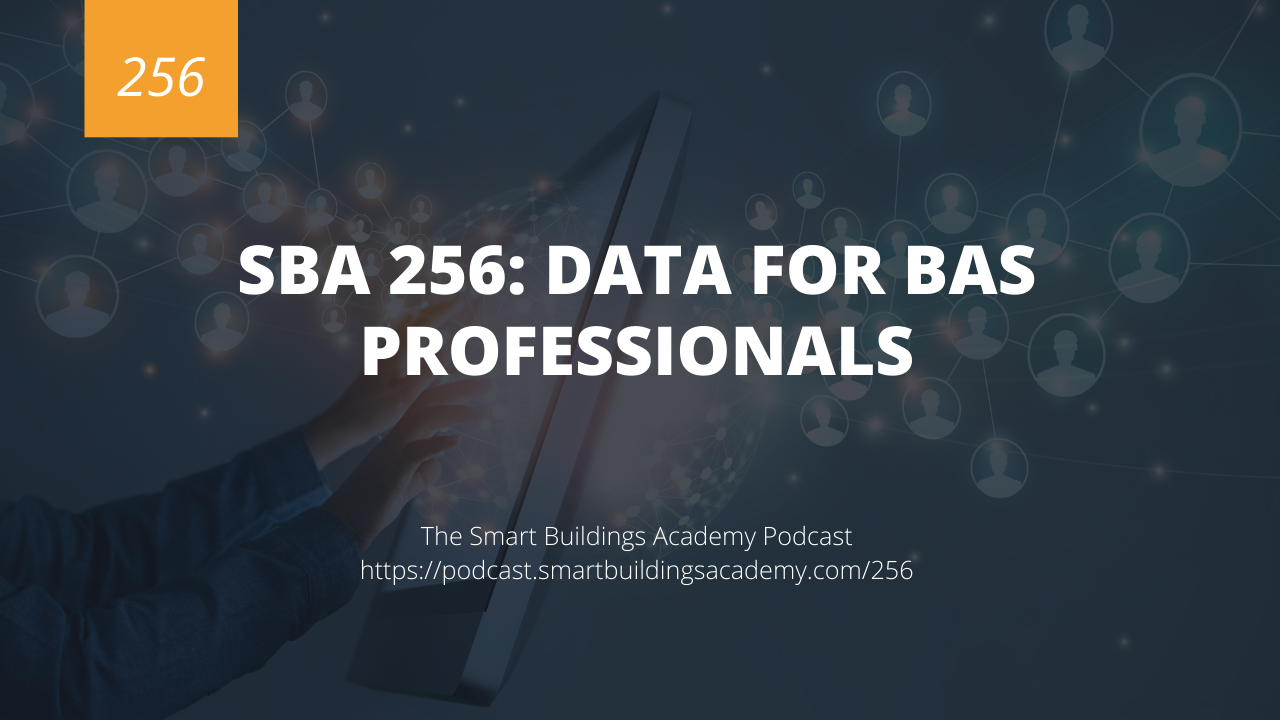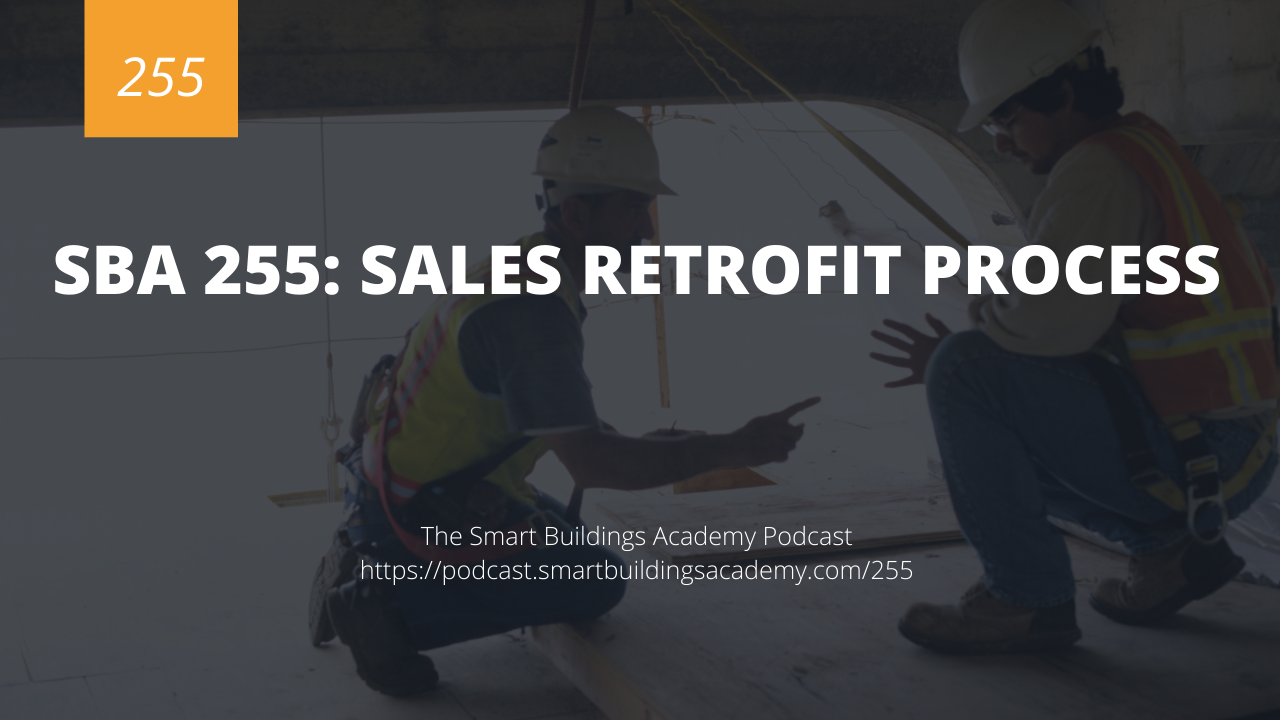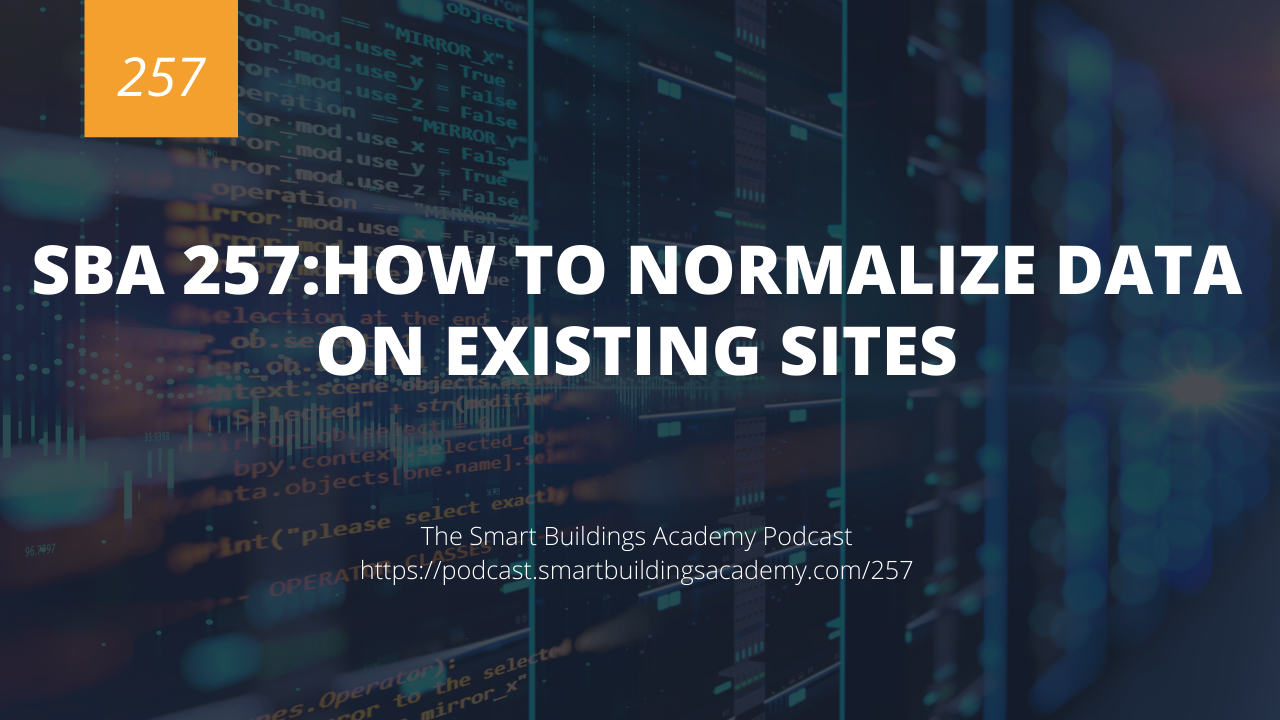In this episode of the Smart Buildings Academy Podcast, you will learn what data is and how we use it in building automation.
Click here to download or listen to this episode now.
Resources mentioned in this episode


Transcript
Phil Zito 0:00
This is the smart buildings Academy podcast with Phil Zito Episode 256. Hey folks, Phil Zito here and welcome to Episode 256 of the smart buildings Academy podcast. In this episode, we're going to be talking about data for building automation professionals, we're going to discuss what data is, how we use it, how we acquire it, and why it matters to us as building automation professionals. As always, everything that we discussed can be found at podcast smart buildings academy.com, forward slash 256. And this week's episode is brought to you by our it for VA s professionals version two, while the Early Access Program price has increased, it is still open for enrollment. So feel free to go to smart built or podcast dot smart buildings academy.com forward slash 256 scroll down to the it for be as professional as version two and purchase the course that is the only course that will teach you everything you need to know about it from the perspective of a building automation professional. So data is information. And typically in our world data is ones and zeros. But data by itself is useless without context. And so when we are collecting data for building automation systems, we are typically Connect collecting contextual data. So I want to start off by talking about the normal ways we used to collect data and some of the ways we are now collecting data and shaping data and then using data. So in the past, there really were only two ways we could collect data. And that was going to be present value data. And that was kind of data that existed in a moment of time, it was usually visualized on a set of graphics or on some sort of display. And then we had trended data and trended data was data that was collected either on a time interval, or when the data itself actually changed. You also notice change a value. And that data was stored in a database. And it was largely what was called a relational data. Now relational data means that the data relates to a object. So for example, a v v box may have discharge, air temp, it may have zone temp, and those values, right, they relate to a specific va vbox. So that's known as relational data. And that is the primary data structure that we use in building automation. Even to this day, you'll still hear people nowadays, or you'll be hearing people nowadays talking about non relational data, Hadoop databases, etc. But the fact remains, the vast majority of databases are SQL or SQL ish databases, and our relational databases that rely on primary keys and fields within those tables. So what does all of that mean? Well, when data is collected, typically from a supervisory device, although now some field controllers collect data, that data is stored in a table. So for example, all v v boxes may be a table, and you may have a primary key on that table, that would be known as a unique key. So like V a v, one V, one V a v one, v two v, v, one, a three, those could all be unique primary keys for the entry in the table. And so in each table, you'll have that primary key tied to an entry, and then you'll have your secondary key in your fields, right. And so you don't have to have a secondary key. But you definitely have to usually have fields. And so your change of value and your trended values would show up in that database under the fields in a table associated with a primary key. You with me so far? All right. So what do we have to do with this data? And how are things changing? Well, what we're seeing change is that we're seeing this table structure remain this primary key structure remained. But we're seeing the introduction of metadata, which is deti data about data. So if we think about the concept of a car, right, I have a car and its color color is metadata. It has a number of doors, that's metadata, but that's also a property. So metadata and properties can be interchangeable in some exchanges. And in other exchanges, they can be different objects in and of itself. But metadata provides us information and context to the data we have. And this becomes important when we want to start doing things like analytics when we want to do things like automatically generated graphics.
Because what will happen with things like haystack which we've talked about in previous episodes, you'll be able to have metadata about data, and that metadata will have properties or objects and From that information, we'll be able to automatically create graphics, automatically create programs will be able to run queries will be able to run analytics. So the metadata, the data about the data enables us to use all of these additional features. So we want to be aware of that as we approach data in building automation. And that's really the big shift. The big shift in of itself is twofold, one that we can collect almost as much data as we want, we are no longer really limited on modern building automation systems in the form of data collection, throughput, or data collection storage, we really don't have those limitations anymore. networks are so bandwidth, the bandwidth and networks have expanded so much. And the storage capacity of databases has expanded so much that we do not run into those and anyone who's telling you you're facing those limitations on a new system probably doesn't know what they're talking about. Our real situation that we sit in nowadays is that we're collecting so much data, what do we actually do with the data? How do we actually approach it. And this all begins with the process of ingesting data of normalizing data. And then acting on data, which we'll be talking about. In our next episode, we'll be talking through normalization. And we'll be talking about how we apply normalization of data onto existing sites, which really is the biggest challenge. If you get data from an new site, you're really not going to spend that much to do that, because you can set it up up front. It's working with existing sites with limited bandwidth networks with limited capacity and compute limitations, and all of those things affecting the building automation system. So at the end of the day data, right, it's just information. And how we use it within our space, is we use it for trending, and we use it for histories, and we collect that data and we store that data. And then we're able to take action on that data. Now with some analytics solutions. Some newer solutions, were able to actually take action on that data, and adjust the system with present value data versus historical data. And we're also able to do predictions based on data sets as well, looking at reoccurring trends, looking at similar sites, etc. There's much more to this. But if you're asked about data, at the end of the day, you just need to know that there's data types that you consume, and you consume them typically via trends. And once you have that information consumed and stored, then you're able to take action on that data. And the more metadata you have about the data, that descriptors that you have about the data, the more action you're able to take and the better able others are or the more others are able to utilize that data to take actions and to generate outcomes. All right, thank you for being here. Like I said, if you're interested in learning more about it, which all of you should be based on the state of our industry, then I encourage you to go to podcasts smart buildings Academy comm Ford slash 256 and check out our it for be as professionals. Alright, I'll see you in our next episode, where we'll talk through how to normalize data on existing sites.





